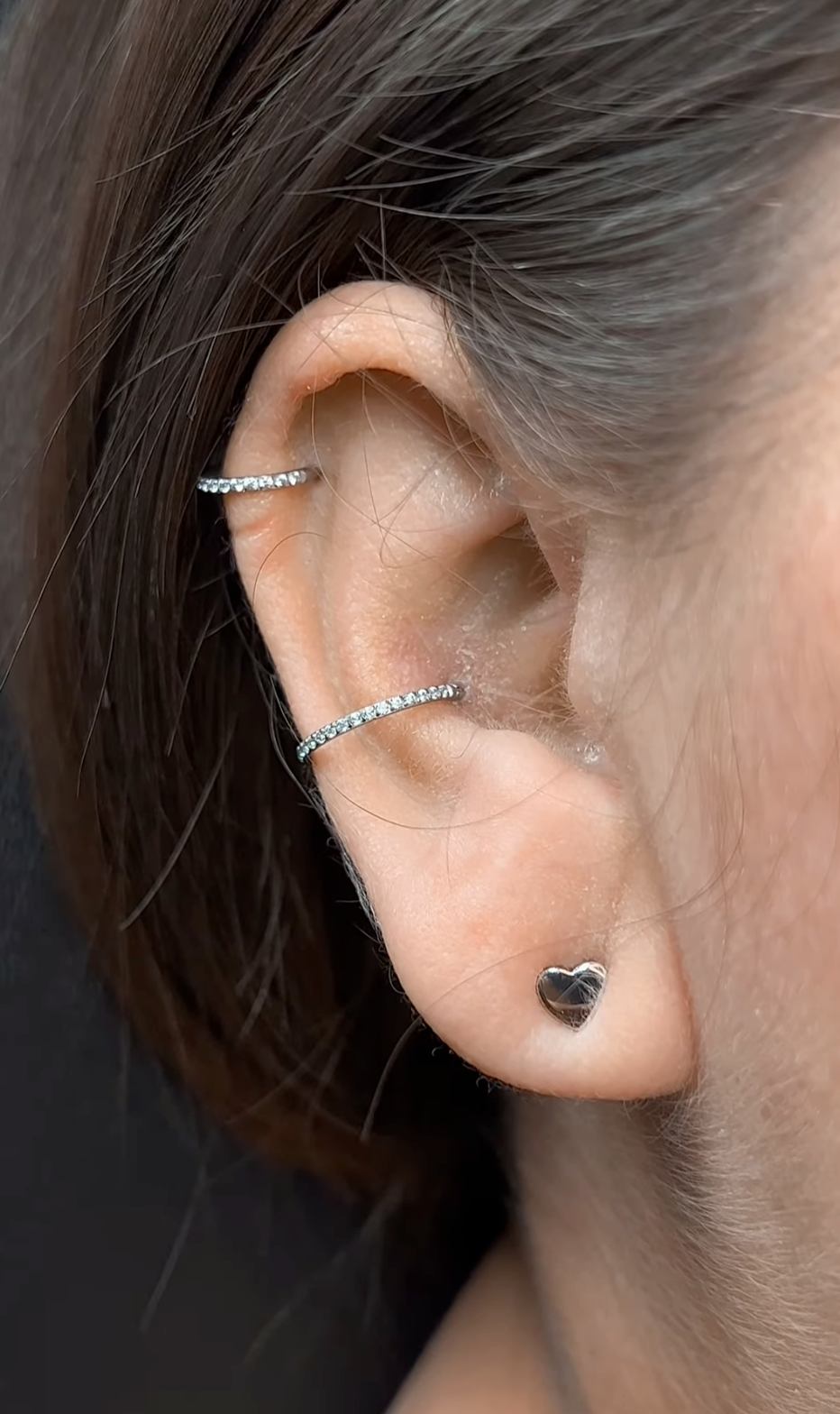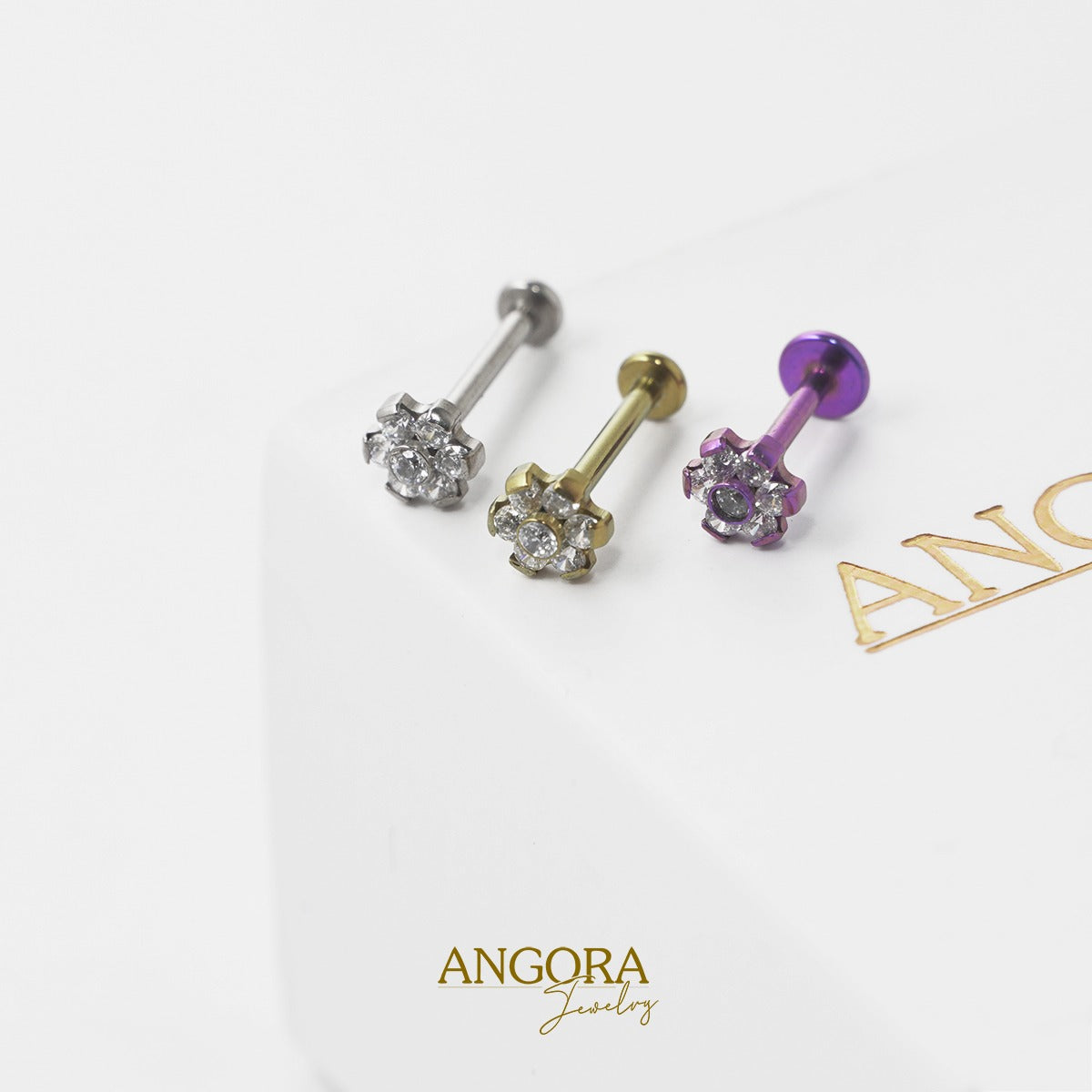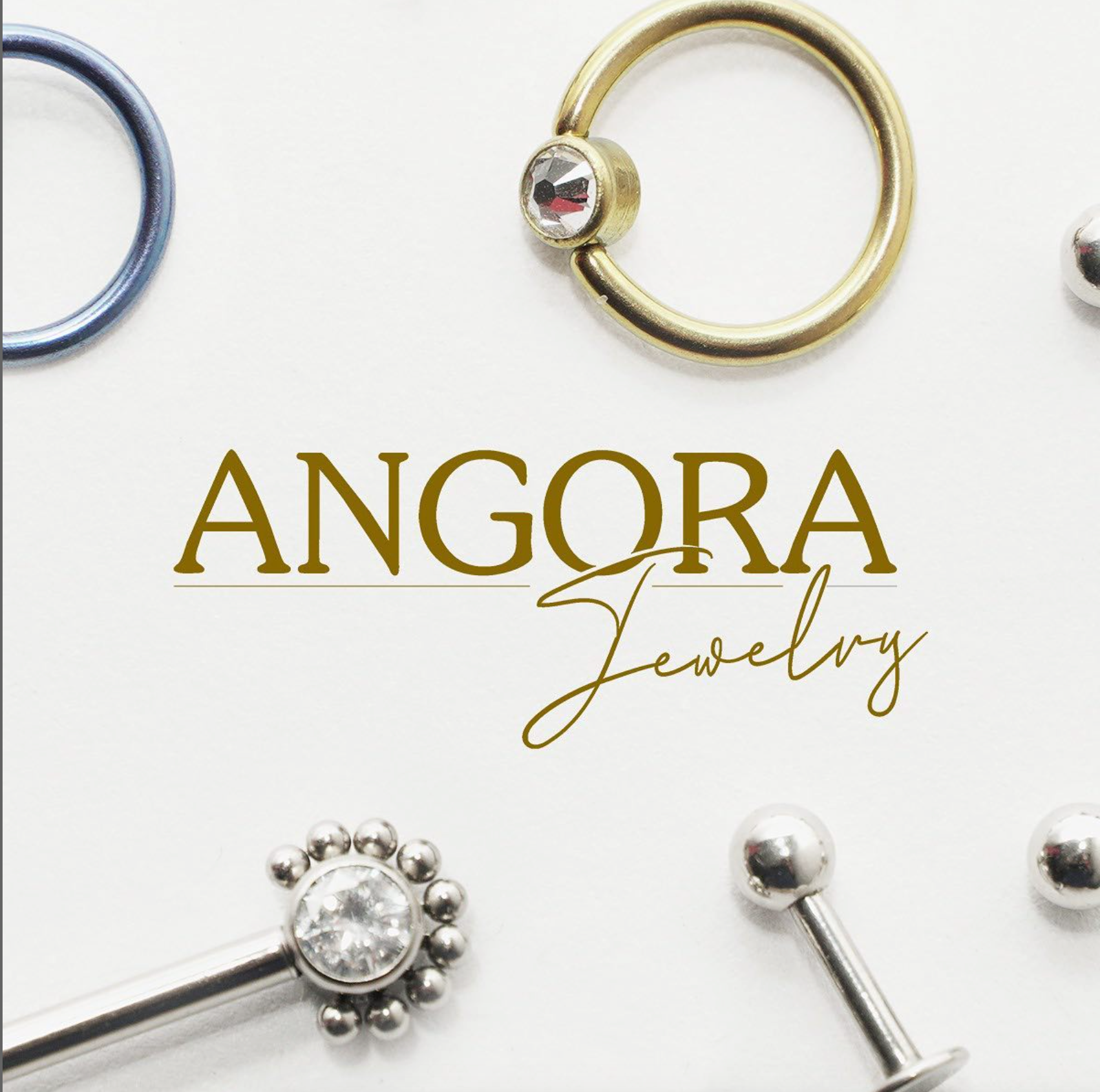DIRECTRICES PARA EL CUIDADO POSTERIOR A LOS PIERCINGS CORPORALES
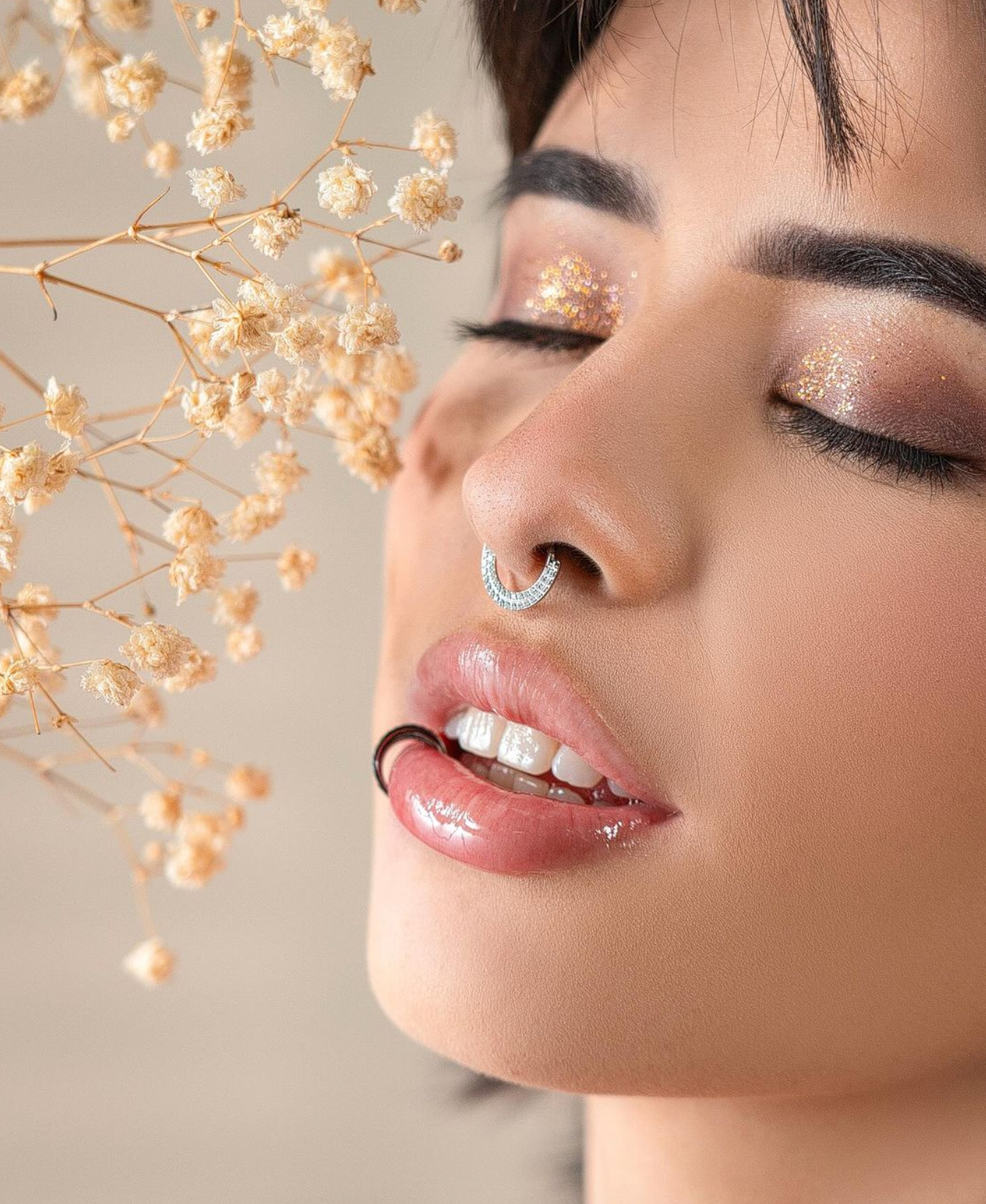
PAUTAS SUGERIDAS PARA EL CUIDADO POSTERIOR DEL CUERPO PIERCINGS
Lávese las manos antes de tocar (o cerca de) un piercing en curación. En la mayoría de los casos, puedes iniciar actividad sexual tan pronto como te sientas preparado, pero mantener la higiene y evitar traumas es vital; Todas las actividades sexuales deben ser suaves durante el período de curación. Utilice barreras como condones, protectores dentales y vendajes impermeables, etc. para evitar el contacto con los fluidos corporales de su pareja, incluso en relaciones monógamas prolongadas. Utilice barreras limpias y desechables en los juguetes sexuales. Utilice un recipiente nuevo de lubricante a base de agua; no use saliva. Después del sexo, se sugiere un enjuague salino adicional.
CONSEJOS:
A menos que haya un problema con el tamaño, estilo o material de la joyería inicial, déjela en su lugar durante todo el período de curación. Consulte a un perforador calificado para realizar cualquier cambio de joyería que sea necesario durante la curación. Comuníquese con su perforador para obtener una alternativa de joyería no metálica si sus joyas de metal deben quitarse temporalmente (por ejemplo, para un procedimiento médico). Deje las joyas puestas en todo momento. ¡Incluso los piercings curados que has tenido durante años pueden encogerse o cerrarse en minutos! Si se retira, la reinserción puede ser difícil o imposible. Con las manos limpias o productos de papel, asegúrese de comprobar periódicamente que los extremos con y sin rosca de sus joyas estén apretados. Si decides que ya no quieres el piercing, simplemente quítate las joyas (o haz que un perforador profesional se las quite) y continúa limpiando el piercing hasta que se cierre el agujero. En la mayoría de los casos sólo debería quedar una pequeña marca. En caso de que se sospeche una infección, se pueden dejar joyas de calidad o una alternativa inerte para permitir el drenaje de la infección, si lo aprueba su médico. En raras ocasiones, cuando se quitan las joyas, las células de la superficie se cierran, lo que puede sellar la infección dentro del canal de perforación y provocar un absceso. Hasta que desaparezca la infección, hable con su médico si debe dejar joyas de calidad o un sustituto adecuado.
SOLUCIONES DE LIMPIEZA
La solución salina estéril envasada es una opción suave para el cuidado posterior del piercing. Mezclar tu propia solución de sal marina ya no es una práctica sugerida desde la APP. Le recomendamos encarecidamente que utilice una solución salina estéril etiquetada para su uso como lavado de heridas. Nunca se deben utilizar solución salina para lentes de contacto, gotas para los ojos ni otros productos salinos en un piercing corporal. Sus ingredientes salinos deben incluir 0,09% de cloruro de sodio como único ingrediente. Mezclar tu propia solución de sal marina normalmente hará que el producto quede demasiado salado y fuerte, lo que puede secar demasiado el piercing e interferir con la curación.
INSTRUCCIONES DE LIMPIEZA PARA PIERCING CORPORAL
LAVAR Lávese bien las manos antes de limpiar o tocar su piercing por cualquier motivo.
SALINA enjuague según sea necesario mientras sana. Para ciertos piercings puede ser más fácil aplicarlo usando una gasa limpia saturada con solución salina.
ENJUAGAR sitio según sea necesario para eliminar los residuos de la solución de limpieza. No es necesario mover o rotar las joyas durante la limpieza o el enjuague.
SECO dando palmaditas suaves con productos de papel limpios y desechables. Las toallas de tela pueden albergar bacterias y engancharse en las joyas, provocando lesiones.
¿QUE ES NORMAL?
Inicialmente: algo de sangrado, hinchazón localizada, sensibilidad y/o hematomas. Durante la curación: cierta decoloración, picazón, secreción de un líquido amarillo blanquecino (no pus) que formará una especie de costra en la joya. El tejido puede tensarse alrededor de las joyas a medida que sanan. Una vez cicatrizado: es posible que las joyas no se muevan libremente en el piercing; No lo fuerces. Si no incluyes la limpieza de tu piercing como parte de tu rutina de higiene diaria, es posible que se acumulen secreciones corporales normales pero malolientes. Un piercing puede parecer curado antes de que se complete el proceso de curación. Esto se debe a que el tejido sana desde afuera hacia adentro y, aunque se siente bien, el interior permanece frágil. Sea paciente y siga limpiando durante todo el período de curación inicial. ¡Incluso los piercings curados que has tenido durante años pueden encogerse o cerrarse en minutos! Esto varia de persona a persona; Si te gusta tu piercing, mantén las joyas puestas; no dejes el agujero vacío.
QUÉ HACER
Lávese las manos antes de tocar el piercing; déjelo solo excepto cuando lo limpie. Durante la curación no es necesario rotar las joyas. El ejercicio durante la curación está bien; escucha tu cuerpo. Asegúrese de que su ropa de cama se lave y cambie con regularidad. Use ropa limpia, cómoda y transpirable que proteja su piercing mientras duerme. Las duchas tienden a ser más seguras que los baños, ya que las bañeras pueden albergar bacterias. Si te bañas en una tina, límpiala bien antes de cada uso y enjuágate el piercing al salir.
QUE EVITAR
Evite limpiar con alcohol, peróxido de hidrógeno, jabones antibacterianos, yodo o cualquier producto agresivo, ya que pueden dañar las células. Evite también los ungüentos, ya que impiden la circulación de aire necesaria. Evite Bactine®, soluciones para el cuidado del oído perforado y otros productos que contengan cloruro de benzalconio (BZK). Pueden ser irritantes y no están destinados al cuidado de heridas a largo plazo. Evite la limpieza excesiva. Esto puede retrasar la curación e irritar el piercing. Evite traumatismos indebidos como la fricción de la ropa, el movimiento excesivo del área, el juego con las joyas y la limpieza vigorosa. Estas actividades pueden causar la formación de tejido cicatricial desagradable e incómodo, migración, curación prolongada y otras complicaciones. Evite todo contacto oral, juego brusco y contacto con los fluidos corporales de otras personas sobre o cerca de su perforación durante la curación. Evite el estrés y el uso de drogas recreativas, incluido el exceso de cafeína, nicotina y alcohol. Evite sumergir el piercing en cuerpos de agua antihigiénicos, como lagos, piscinas, jacuzzis, etc. O proteja su piercing con una venda selladora de heridas impermeable. Estos están disponibles en la mayoría de las farmacias y funcionan mejor para la colocación de perforaciones en el pezón, el ombligo y la superficie. Evite todos los productos de belleza y cuidado personal sobre o alrededor del piercing, incluidos cosméticos, lociones y aerosoles, etc. No cuelgue dijes ni ningún objeto de sus joyas hasta que el piercing esté completamente curado.
Dormir directamente sobre un piercing de cartílago en proceso de cicatrización puede provocar irritación e incluso provocar cambios en el ángulo del piercing. Colocar una almohada de viaje encima de la almohada y luego colocar la oreja en la abertura puede ser útil para evitar esto.
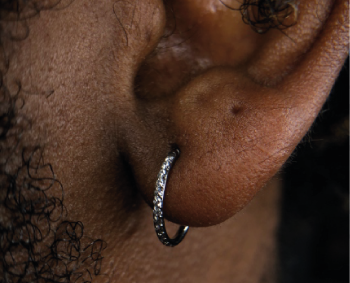
PARA ZONAS PARTICULARES
OMBLIGO:
Usa el truco de la camiseta: viste tu almohada con una camiseta grande y limpia y dale la vuelta todas las noches; Una camiseta limpia proporciona cuatro superficies limpias para dormir.
OÍDO/CARTÍLAGO DE OREJA Y FACIAL::
Mantenga limpios los teléfonos, auriculares, anteojos, cascos, gorros y cualquier cosa que entre en contacto con el área perforada. Tenga cuidado al peinarse el cabello y avise a su estilista sobre un piercing nuevo o en proceso de cicatrización.
PEZÓN:
El soporte de una camisa ajustada de algodón o un sostén deportivo puede brindar protección y sentirse cómodo, especialmente para dormir.
GENITAL:
Los piercings genitales, especialmente los Triangles, Prince Alberts, Ampallangs y Apadravyas, pueden sangrar libremente durante los primeros días. Estar preparado. No es necesaria una limpieza adicional después de orinar.

